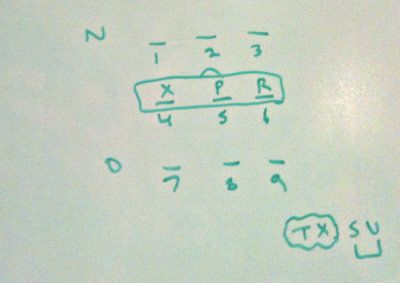I wonder why not (A).
Since this is a must be true question, I must have thinking the wrong way.
And the rule "Only seats in the same row as each other are immediately beside each other" confuses me.
Is this mean there will be no empty seat in the middle, 2,5,8?
And this is why I got to (A) as well as correct answer (B)
S/U/N T S/U/N
1 2 3
X/R P R/X
4 5 6
X/S/U O X/S/U
7 8 9
LSAT Forum
2 postsPage 1 of 1
-

- jardinsouslapluie5
-
Thanks Received: 0
- Forum Guests
- Posts: 59
- Joined: April 22nd, 2012

- Most Thankful
-

- timmydoeslsat
-
Thanks Received: 887
-
Atticus Finch

- Posts: 1136
- Joined: June 20th, 2011
- This post thanked 1 time.

- Most Thanked

- First Responder
Re: Q5
jardinsouslapluie5 Wrote:I wonder why not (A).
Since this is a must be true question, I must have thinking the wrong way.
And the rule "Only seats in the same row as each other are immediately beside each other" confuses me.
Is this mean there will be no empty seat in the middle, 2,5,8?
And this is why I got to (A) as well as correct answer (B)
The rule about the seats being immediately beside each other is telling us that if seats are immediately beside one another in this game, then the seats are in the same row. In other words, you cannot say that seats directly in front, or behind, each other are "beside" one another. That term is restricted for horizontal placement.
This is my global setup of this game:

In regard to #5, it is a local must be true if O is in a reversible block with X (unassigned).

We now know that the only variables left are T, S, and U. We know that with N being in the first row, having S and U in that row with N is not going to happen (N cannot be beside S and cannot be beside U).
So we know that T could not in the last row, as this would cause that situation to unfold. So we now have T in the first row with N. We now have S and U left, which are interchangeable variables. One of S and U will be in the front and one will be in the back. To accomodate one of these variables in the front row, it must be the case that T is in the middle of the situation. This is a commonly tested concept in logic games. To put either S/U or N there will create an unacceptable situation of those variables being immediately beside one another.
2 posts Page 1 of 1